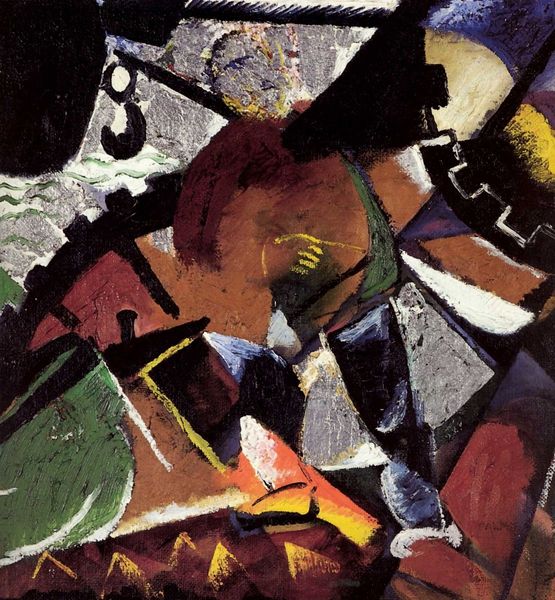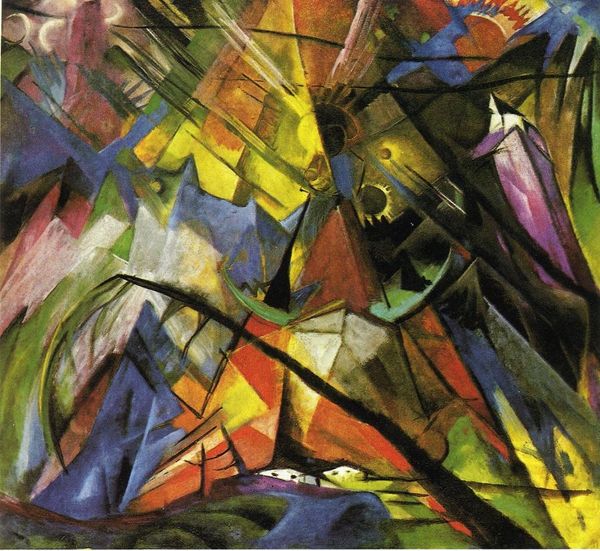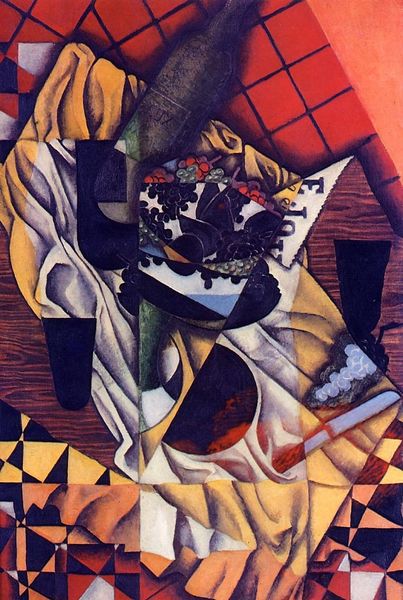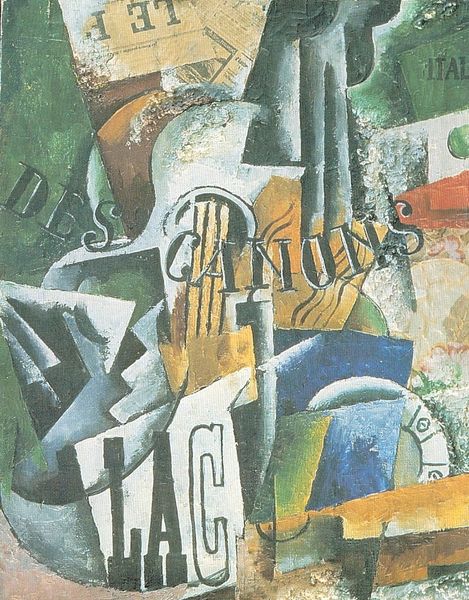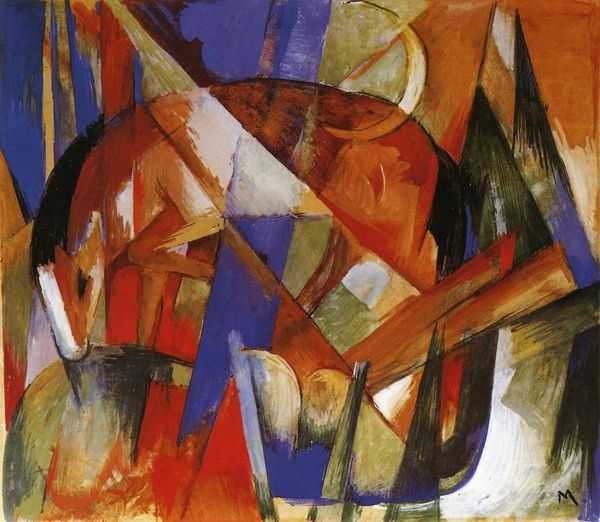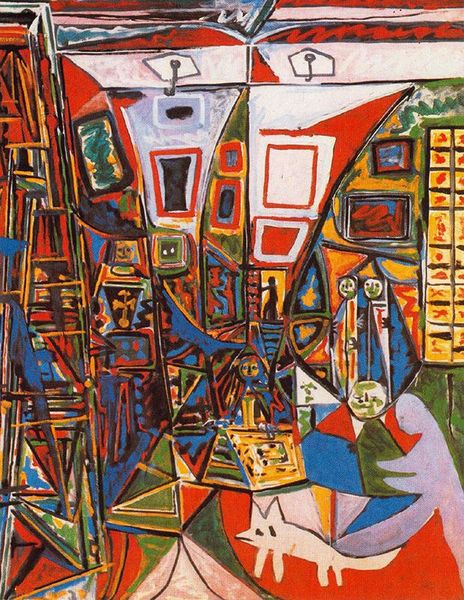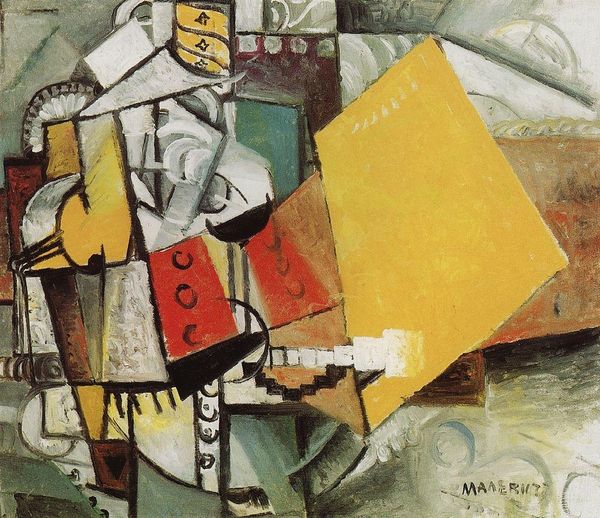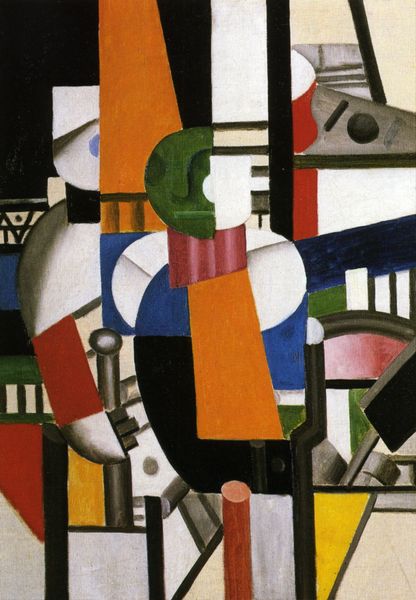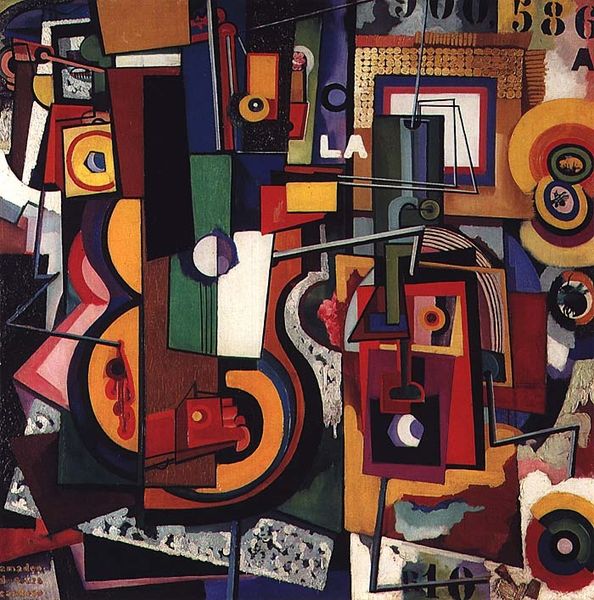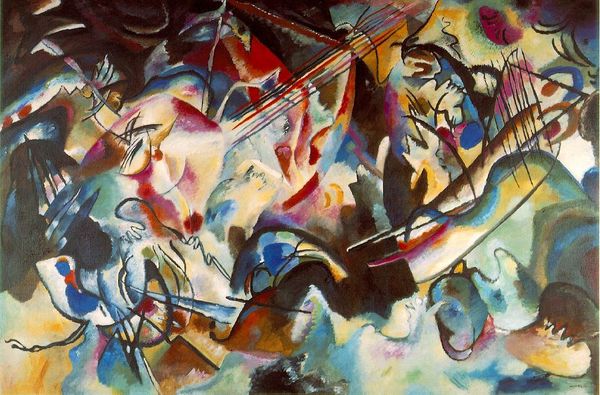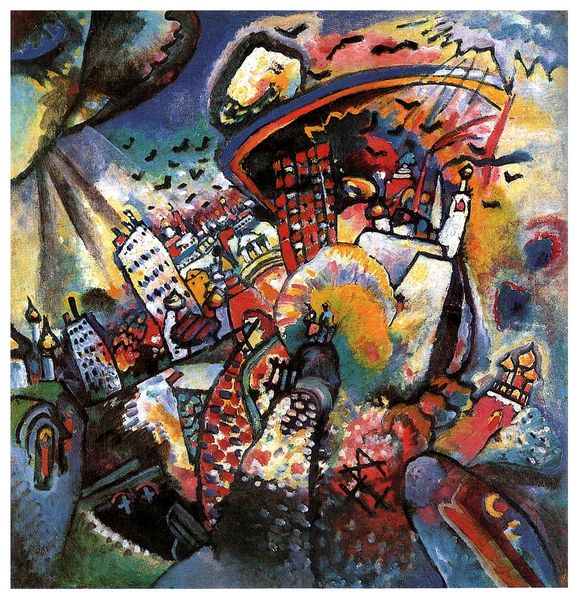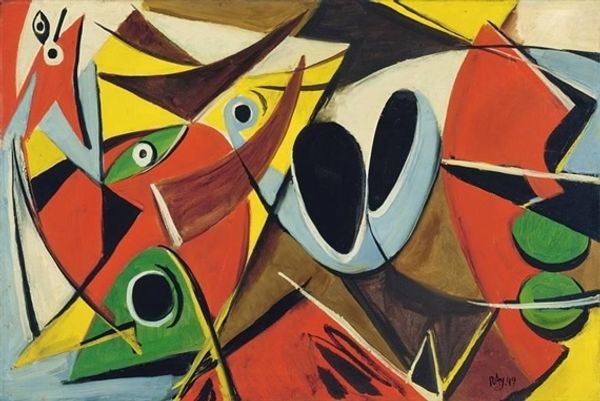
painting, oil-paint
#
cubism
#
abstract painting
#
painting
#
oil-paint
#
geometric
#
cityscape
#
modernism
#
futurism
Copyright: Public domain US
Curator: Féliz Del Marle's "The Port," painted in 1914, plunges us into the industrialized fervor of the early 20th century through the lenses of Cubism and Futurism. It's an oil painting where the port cityscape dissolves into vibrant abstraction. Editor: The immediate impact is quite chaotic! The color palette—those reds, blacks, oranges—it feels like an industrial explosion rendered in geometric form. It's a very fragmented, almost violent composition. Curator: That sense of dynamism is key. Del Marle was engaging with the Futurist obsession with speed, technology, and the modern metropolis. Ports, like factories, became powerful symbols of progress, though such rapid advancement came at a cost to laborers and certain communities, who are conspicuously absent here. The fragmentation is not simply aesthetic; it mirrors the disrupted social and economic realities of the era. Editor: I'm seeing planes of color colliding, fighting for dominance. The shapes, some suggestive of maritime objects like a ship's bow and masts, the signs with text - 'New York' and what appears to say 'Niagara' - become aesthetic devices first. The layering is also critical; it creates depth but also adds to that sensation of disintegration. Curator: It speaks to the rapid transformation of the social and political landscape. There's a tension inherent in portraying the allure of modernization while, intentionally or not, hinting at the simultaneous displacement and alienation it caused. It can be interpreted as a criticism of a society enamored by industry and detached from the human cost. Editor: The semiotic game between representation and abstraction, the literal deconstruction of form is fascinating here. Take those sharp lines that convey direction or speed. How do they challenge our reading, to force us to analyze before experiencing it? Curator: Del Marle's background adds depth here. His leftist political leanings—having joined the French Section of the Workers’ International – definitely informed his critical perspective on the rise of capitalism and industrial society that he is depicting. This may be seen in the lack of figuration here, and instead, the embrace of hard edged form. Editor: It ultimately makes me reflect on how art visualizes industrial revolution and technological advancements, as Del Marle has powerfully conveyed its impact not just on physical spaces but also our perceptual experiences. Curator: And how artistic expression, even at its most abstract, is inherently entwined with social consciousness and a need to see society from different lenses.
Comments
No comments
Be the first to comment and join the conversation on the ultimate creative platform.
